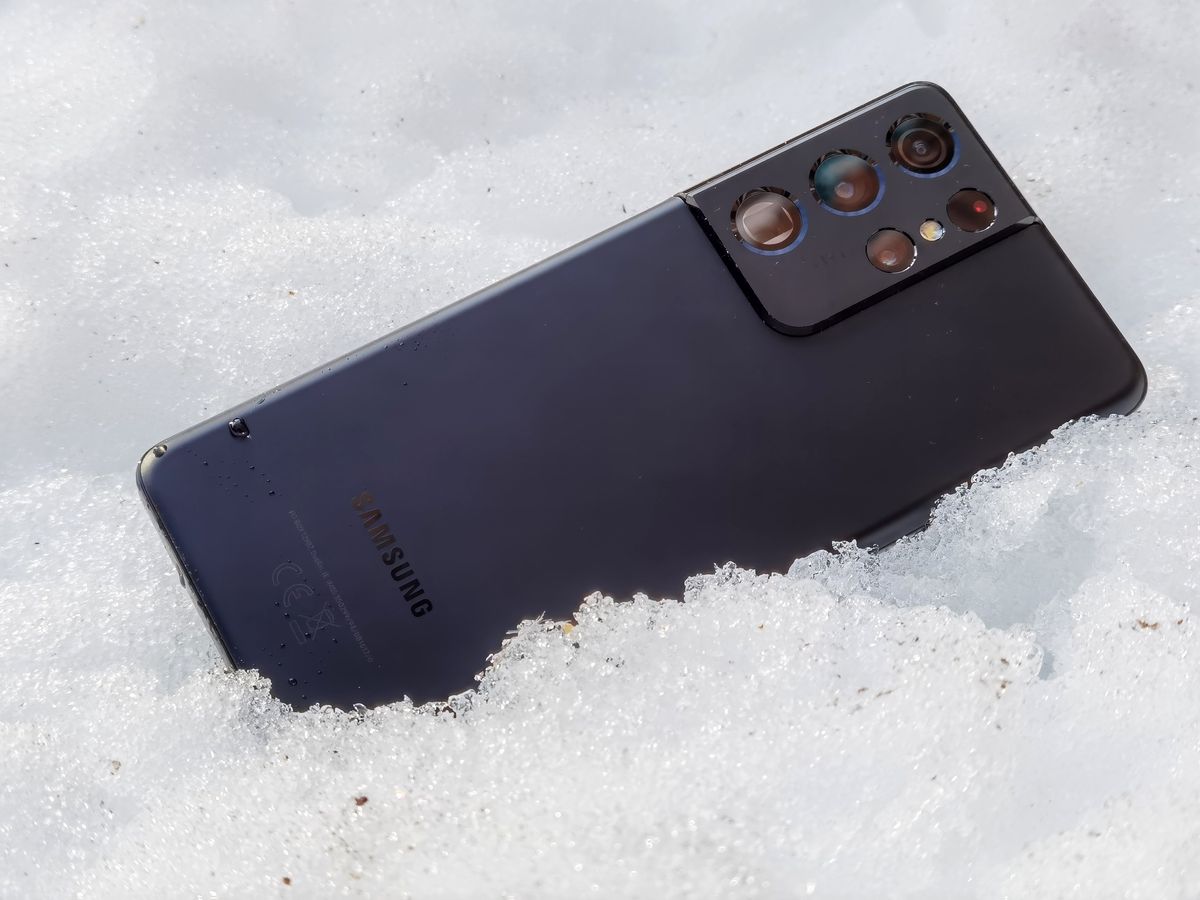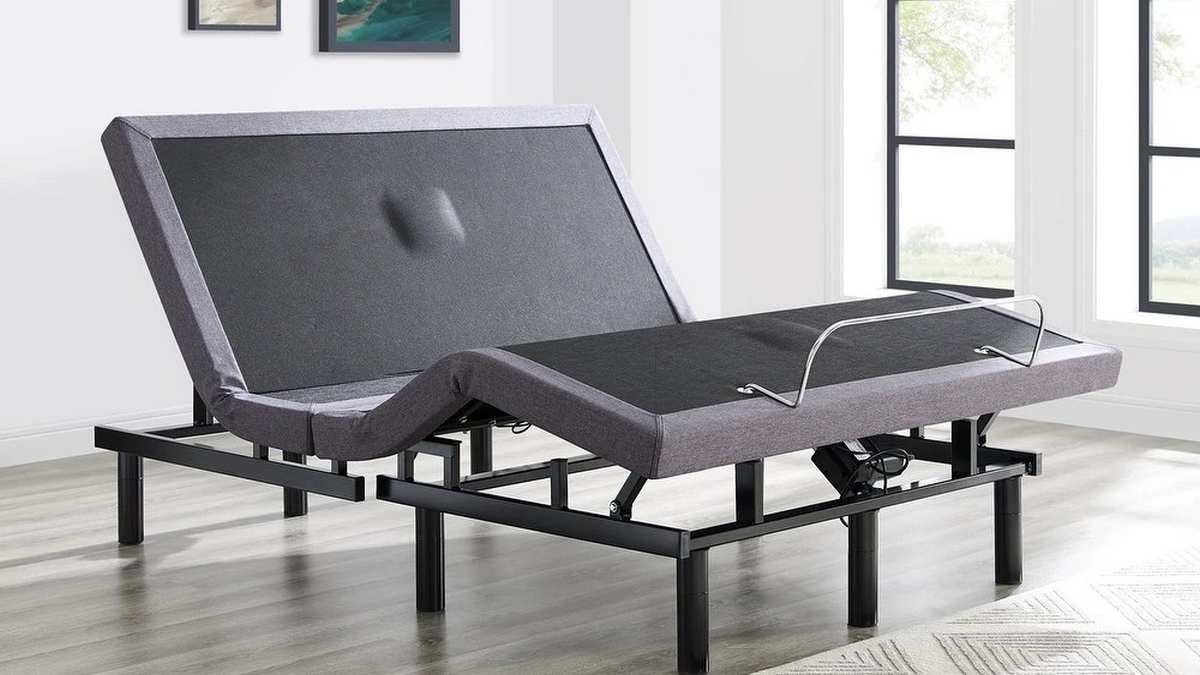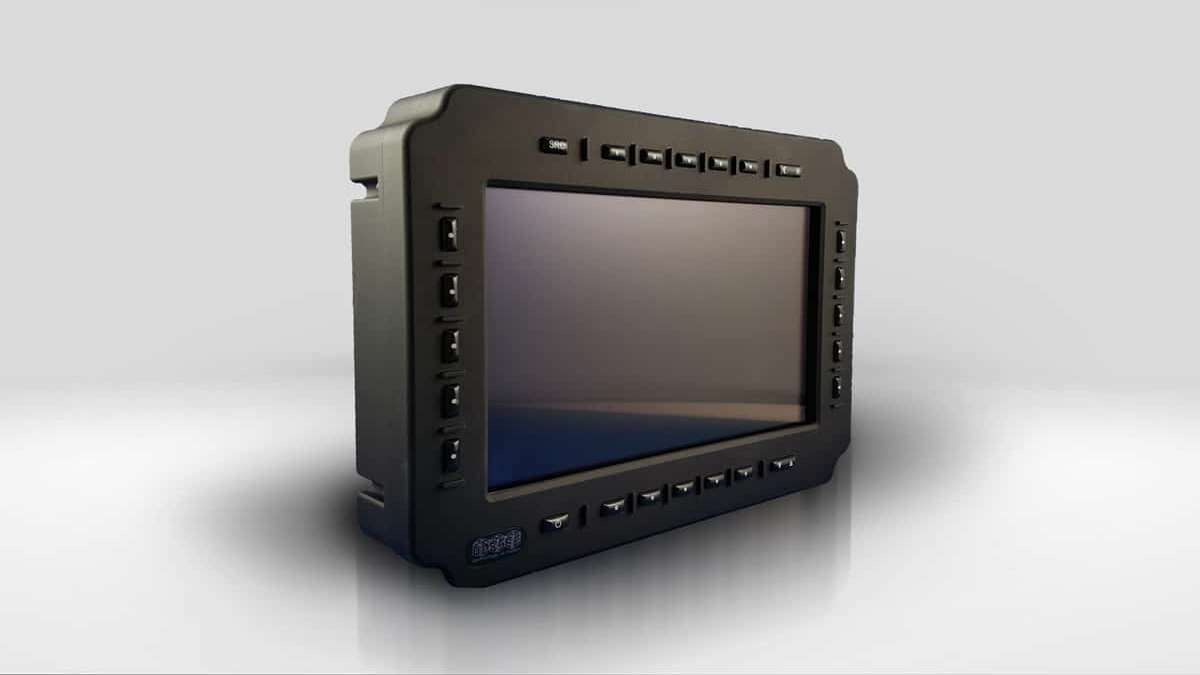
Samsung’s most important mobile phone so far this year has already fallen into my hands. The Samsung Galaxy S21 Ultra is what was expected and maybe something else. But is it worth updating your Samsung Galaxy S20 with this change? Does Samsung Solve Your Camera Issues? What does this colorful terminal really bring? I answer these and other questions throughout this review. But I already anticipate that the 6.8-inch Dynamic AMOLED 2X screen with 120Hz is one of its strengths. And of course, the 108-megapixel main lens will delight those who want photos loaded with detail and information. Of course, to enjoy all this you will have to scratch your pocket and spend 1,250 euros for its more “adjusted” version . Or go up to almost 1,500 euros if you want the most “cucumber” Samsung mobile to date. And now, I’ll tell you what this terminal has given itself during this week of use.
The best Samsung design? I say yes
Although we are entering personal territory, what there is no doubt is that Samsung continues to sign the best mobile designs in the present. Both for quality of finishes and for design. For this Samsung Galaxy S21 family, the Koreans have opted for more striking colors that make a difference with respect to the rest of flagships or top-of-the-range terminals from other manufacturers, and they have succeeded. The so-called phantom Violet and the two-tone game between camera module and housing is key to this. The only problem is that the Galaxy S21 Ultra models are left out of this dance of colors. Here Samsung has opted for the classic: black and silver. Of course, with matte finishes that shine but are not full of fingerprints. And this is something to celebrate.
In the test terminal that I have been able to enjoy the finish is completely black. And the truth is that it is beautiful, elegant and very formal. It’s nice to wear it without a cover and enjoy the matte black. Dirt and fingerprints are nowhere to be found . Although I miss the option of a more attractive finish for people who, like me, have no problem showing off a colorful mobile. Although it can always be supplied with a cover that protects the finish and the camera module that adds that touch of color.
The other important point here has to do with the design of the camera module . It continues to stand out notably from the body. And yes, it’s big and it can give you some trypophobia with that much circle in it. But instead of being a plateau attached to the mobile, Samsung plays to unite it to the rest of the terminal thanks to the lateral metal frame , which look like the arms of this module hugging the rest of the terminal. Furthermore, the mix of diametrically opposite rounded and pointed corners makes it an iconic module. There will be more rectangular modules in the upper left corner of other phones, but you will know which is the one of a Samsung Galaxy S21 with a single glance. Very well done, Samsung.
Yes, it is a fairly large mobile with its 75.6 x 165.1 x 8.9 mm, although it is ergonomic thanks to its weight of 229 grams, which is well distributed and balanced. For everything they have inside, their outside more than meets . Here there is no but for this Galaxy S21 Ultra.
Fluid and intelligent screen, the best of this mobile
If there is a second thing that Samsung knows how to do well, after design, it is to take advantage of AMOLED technology. This time, in the Galaxy S21 Ultra, Samsung improves what was seen in the previous generation. It takes advantage of the Dynamic AMOLED 2X technology again, but in a panel that manages to reach up to 1,500 nits of brightness , with more contrast (50% more compared to the S20 Ultra) and with 100% color rendering. All this reaching 2K or QHD + resolution in its 6.8 inches. It is a screen that is nice to look at. Oversaturated, bright and very lively. The usual in Samsung, which slightly distorts colors to show a more colorful reality, but which is nice to see.
Another advance that I have especially enjoyed is the fluidity offered by the 120Hz screen. Moving around desks and menus on my mobile is fast and gives that pleasant feeling of agility. Of course this means taking advantage of the, for now, 60Hz of games like League of Legends Wild Rift (they have announced that it works on the support for 120Hz) or others games like Pokémon GO.
There are also novel details such as a eye protection mode that automatically adapts , the projection of blue light on the screen. If we activate this setting and select that it is regulated automatically (in other Samsung mobiles the management was only manual), we will see a warmer screen that pulls towards orange-brown as the hours of the day pass. The idea is to project less blue light as the day ends, seeking that our body does not limit the production of melatonin when we go to sleep in addition to avoiding problems such as visual fatigue. Something, the latter, which also helps that the screen has a minimum of up to 10Hz of screen refresh when necessary. I have to say that I have no problems with my melatonin so I have not taken full advantage of this function. But if you read books on your mobile or always review TikTok videos before sleeping, this function can help you.
By the way, this panel is protected with Gorilla Glass Victus glass , which ensures it resists falls up to two meters. Something that, of course, we have not tried on a mobile of such a price that they have only lent us. What I can tell you is that the curvature or edge of the panel and the finish is really subtle. The bad thing is that the screen protector that comes with the mobile does not take advantage of the entire width and, when using the gesture navigation mode, I have noticed each of the slides to go back scraping with the edge of the protector. A minimal detail to get something out of this great screen.
Is more better in photography? Yes and no
For Samsung, the cameras of the Galaxy S21 Ultra are the jewel in the crown. And it is true that it is the differentiating key, in addition to the screen size, with respect to its smaller brothers and also with respect to the 2020 edition. But has Samsung exceeded expectations and finally improved its photographic section to compete with the rest of the manufacturers? Well yes and no. There is progress, but there are also still problems.
The older brother of the Galaxy S21 claims to be the only one with a 108 megapixel main sensor . To enjoy it, it has its own setting in which to take advantage of the full 4: 3 sensor and the maximum resolution. For what? Well, to get photos full of detail that you can crop and reframe afterwards without losing detail. Especially now that Samsung offers the 12-bit RAW versions of the photos you take with this S21 Ultra for those who are passionate about photography and its retouching. They have improved the sensor and get photos with a more than remarkable dynamic range, very bright and full of detail. Of course, be careful not to enlarge them too much or you will see the seams of the Samsung processing: margins and definition that seem to have been painted with watercolors instead of pixels. Even so, this sensor is one of the best in the mobile market, and its brightness and detail are positively surprising.
Of course, on the screen of this mobile everything looks really good, with a color that does not always resemble reality, but that does make any scene more striking. Samsung’s usual touch in this regard.
Where this photographic section improves notably is with telephoto lenses. Yes, in the plural because there are two. One of them offers a lossless 3X zoom that works very well in terms of brightness and definition. And in its SpaceZoom with 10X optical zoom of the second telephoto lens. Both with a stabilization that is now somewhat more comfortable to take shots of distant elements. Even at 100X thanks to automatic frame lock after aiming for more than 2 seconds at a detail . It is more comfortable and more feasible, although the higher magnifications cannot be used for taking good photos, but for gossiping from afar. I do not judge you, I use this a lot because of my myopia.
However there are still problems with wide angle of this module. It is the lens that lags behind in terms of brightness and definition. And these seams are especially noticeable at night, where even the colors differ from the same shot and frame taken with another lens. Something that leaves me with bittersweet feelings in general.
I have also found some flaws when it comes to getting a good photo in a single shot. Despite having hardware tools like a laser focus and also software to activate a focus enhancement, I have found that what I thought was a good photo was not as sharp and focused as I believed in the gallery. So I advise taking several photos of any detail before settling.
The cameras are good, and the results can be really good, don’t get me wrong. But still there is much room for improvement in the face of less educated users in photography . For example: a more agile and less noticeable change between lenses, a more reliable focus, fewer luminous aberrations against light, a more balanced or retouched contrast in selfies, a more realistic portrait mode … Small details that, together with the technical sheet that these cameras already have, would significantly improve the result, making it more comfortable and easier for any type of user.
Of course, there are also new functions and interesting advantages in this regard. Along with a director mode that allows us to record with two cameras (front and rear at the same time), but keeping the rest of the lenses in perspective to jump to the one we want with a single press, there are also other technical displays such as 4K recording from any of these lenses . Or an improved night mode (with 3X optical zoom) that continues to make it seem like it is night even though we see colors and luminosity that even the eye is not able to capture. Although it is the 8K recording and the super stabilization (limited to FHD resolution) that attracts the most attention. Hopefully you will soon enjoy fully stabilized 4K recording with this technology. It will be the end of the stabilizing sticks for mobiles.
By the way, regarding portrait mode, and linking to talk about the camera for selfies, the results are also bittersweet. The camera has solvency and, with light, the textures, hair and details are defined. But forget about getting the best portrait or bokeh with the selfie camera . The trim has improved, but is still not perfect. In addition, the additions in terms of lighting and software cropping do not offer too many novelties or changes that are really usable without noticing that they are that, a somewhat crude retouch. Especially if the result is not realistic because the sensor does not correctly recognize part of your hair or glasses. The results are much better with the rear cameras and its laser depth sensor, of course. But there is a notable problem, and that is that the true result of the crop is not shown on the screen until you open the photo in the gallery. Something that has forced me to repeat a shot many times to achieve the desired effect with a correct crop and without doubting the focus. The result is better than what you see on the screen, but you don’t see it until you enter the gallery. And how does a pineapple taste:
Portrait mode with objects
In conclusion and summary: Samsung improves in the photographic section compared to previous generations of the Galaxy S , but it still does not get ahead in the rest of the market. High brightness, high dynamic range and contrast and extra functions do not save details as an experience. User AI somewhat erratic or needs practice for less expert users. The advance is good, but it does not manage to be the most versatile camera on the market. For us it is still in the top 3, with elements above and also below manufacturers such as Apple and Huawei. Of course, the competition is being fierce and there will be those who bet on better technical data, for better results or for greater ease of use. Of course this 2021 is going to be photographically close.
More power and more memory, But is it necessary?
It is if you pay more than 1,000 euros for a mobile. And it is that for that price you hope to get hold of the most cutting-edge advances in current technology. But if you think that having more RAM memory in your mobile than in your computer is going to change your life … sit down, because we have to talk.
Samsung is showing off with its new processor Exynos 2100 . And it is not for less thanks to the numbers obtained. It is a processor manufactured in 5 nanometers with great processing solvency and, in addition, efficient. Although the real addition of importance compared to last year’s edition is that it has its own 5G modem, which the younger brothers in this Galaxy S21 range finally take advantage of. However, you will be able to open WhatsApp, publish stories on Instagram, record TikTok videos or get addicted to LOL Wild Rift in a very fluid way with the same user experience as in the Galaxy S20 range. The numbers are technicalities that do not justify, at least in this case, the jump from the previous generation of the S20 Ultra to this S21 Ultra. Not even in its 16GB version of RAM.
Now, if you haven’t changed your mobile for a couple of years and you want to ensure solvency and fluidity for a couple more years (or even more), the technical sheet of this Galaxy S21 Ultra will not disappoint you . And it is a real beast in terms of numbers and user experience. Everything is fluid and you can enjoy all the graphic displays of the latest games of the moment. As well as the most agile Internet connections. This mobile is made to move absolutely everything.
But not only the usual applications, of course. It also has elements inside such as Samsung Dex without cables to transform it into a computer with which to work in desktop format, or it allows it to become the remote control to open your car. It is even capable of managing details of your connected home (if you have more connected Samsung devices in your home) even from the car. Advances and supports that make this mobile the most advanced of Samsung, but that may not justify its price if you arrive from one or two generations back.
Samsung Galaxy S21 Ultra, data sheet
10 Megapixel Dual Pixel Telephoto with Optical Magnification 10X, f / 4.9, 1.22um pixels, OIS and 100x Space Zoom
Laser AF
AKG stereo sound
Ultrasonic Fingerprint Sensor, Face Recognition
120Hz refresh rate on screen
UWB Technology
Support for SPen
WiFi 6E
1,250 euros 12GB / 128Gb model
1,310 euros 12GB / 256GB model
1,440 euros 16GB model / 512GB
5,000 mAh battery but no charger
In the end Samsung has folded to the trend set by Manzana. Gone are the gift AKG headphones, the power adapter and even the mocking tweets for the decision that changed everything in the packaging aspect and, hopefully also, in the sustainability aspect. Yes, this 1,250 euro mobile comes without the power adapter. It does have in its box with the charging and data cable (USB-C to USB-C) and the spike to extract the SIM card tray. And that’s it. Something that makes it a simpler and lighter box. Although here the point continues to be the reduction of materials and the energy and waste savings that eliminate these common components that, supposedly, are not always used. The joke, in my case, is that being a technology journalist, and with different products at home to review, I do not have a so-called USB-C power adapter at hand. Which has led me to use one from Huawei and a powerbank with wireless charging from Samsung as needed. Are we so prepared for the elimination of these components? I say no. At least with the latest USB-C type standard. Make sure of this before buying any Galaxy S21 if you don’t want to be surprised.
Now, going on to talk about the battery, Samsung includes in the older brother the largest drummer in this family. The Galaxy S21 Ultra has a 5,000 mAh battery. But let the data not cloud the experience: you have to move more screen, with more resolution (if you increase it compared to the FHD + that comes by default). So the average is balanced with about 5 or 6 hours of active screen. Just enough to get through the day without the need for a charger and if you don’t abuse your mobile. A common average for Samsung terminals, which remain unremarkable in terms of autonomy. And even falling short if you abuse videos or games. But this generation also lags behind with respect to fast charging.
And, if you have the corresponding adapter, Samsung’s fast charging stays in the 25W . Without approaching the 60W achieved by manufacturers like Oppo or Huawei that make this feature something really surprising. It means, then, that you will need several more hours of charge to get 100% of the battery. Wireless charging doesn’t stand out either with its 15W. In addition, Samsung does not forget about reverse charging to give up some of its 5,000 mAh power to other wireless devices.
All without losing sight of your price, which is between 1,250 euros in its version with 12GB of RAM and 128GB of capacity (not expandable), and the almost 1,500 euros in the 16GB of RAM model with 512GB of storage . Is it worth the outlay? Well it depends on where you come from. If you need to change your mobile, you will opt for the most advanced. If you just want to upgrade, maybe it’s better to wait for a good deal.
Other news about … high-end, Samsung, Samsung Galaxy S
| Samsung Galaxy S21 Ultra | ||
|---|---|---|
| Screen | 6.8 inches with Dynamic AMOLED X2 technology, WQHD + resolution (3,200 x 1,440 pixels), 515 dpi density and 10-120Hz refresh rate for the screen | |
| Main Camera | Ultra large 12 megapixel Dual Pixel wide angle, f / 2.2 aperture with 1.4um pixels (120º of view) Great wide-angle 108 megapixel f / 1.8 with 0.8um pixels and OIS 10 megapixel Dual Pixel telephoto with magnification 3X optical, f / 2.4 and 1.33um pixels and OIS | |
| Camera takes selfies | 50 megapixel main sensor with wide f / 2.2 aperture | |
| Internal memory | 128GB / 256GB / 512GB | |
| Extension | Via micro SD cards up to 1 TB | |
| Processor and RAM | Exynos 2100 5nm 64-bit with eight cores 12GB / 16 RAM memory |
|
| Drums | 5,000 mAh with 25W fast charge Enhanced Wireless Charging 15W Fast Wireless Charging Wireless PowerShare Quick Charge Shared | |
| OS | Android 11 under One UI 3.1 | |
| Connections | WiFi 6E, up to 7CA, LAA, LTE Cat20 (up to 2.0Gps download and 150 Mbps upload) or 5G sub-6, Bluetooth 5.0, dual-band GPS (GLONASS, Beidou, SBAS and Galileo), NFC and USB Type-C 3.1, proximity sensor, RGB sensor, accelerometer, etc. | |
| SIM | nano SIM | |
| Design | Combination of glass and metal with rounded edges Finished in Gorilla Glass Victus Available colors: phantam black and phantom silver IP68 certification, water resistance ua and dust |
|
| Dimensions | ||
| Featured Features | ||
| Release date | January 14, now available | |
| Price |



